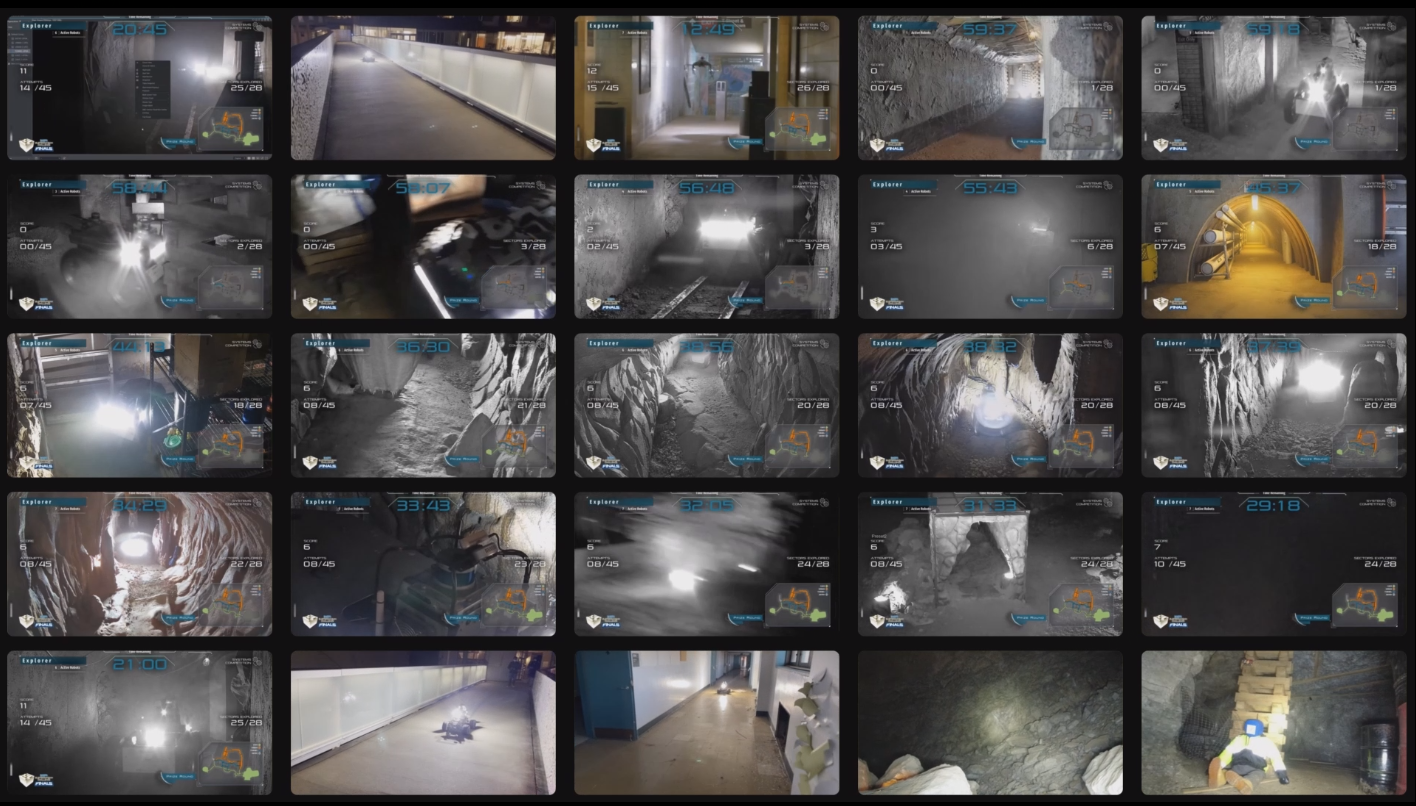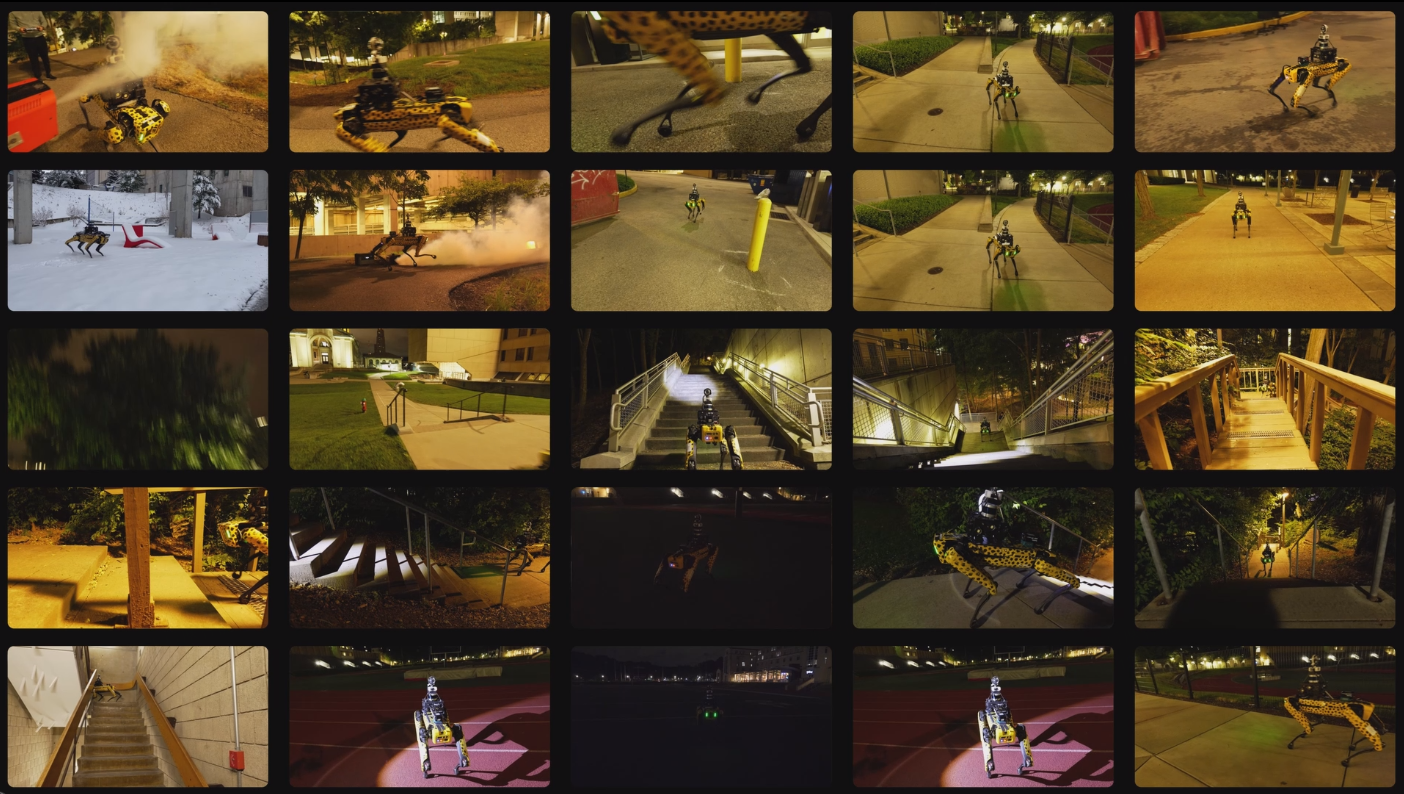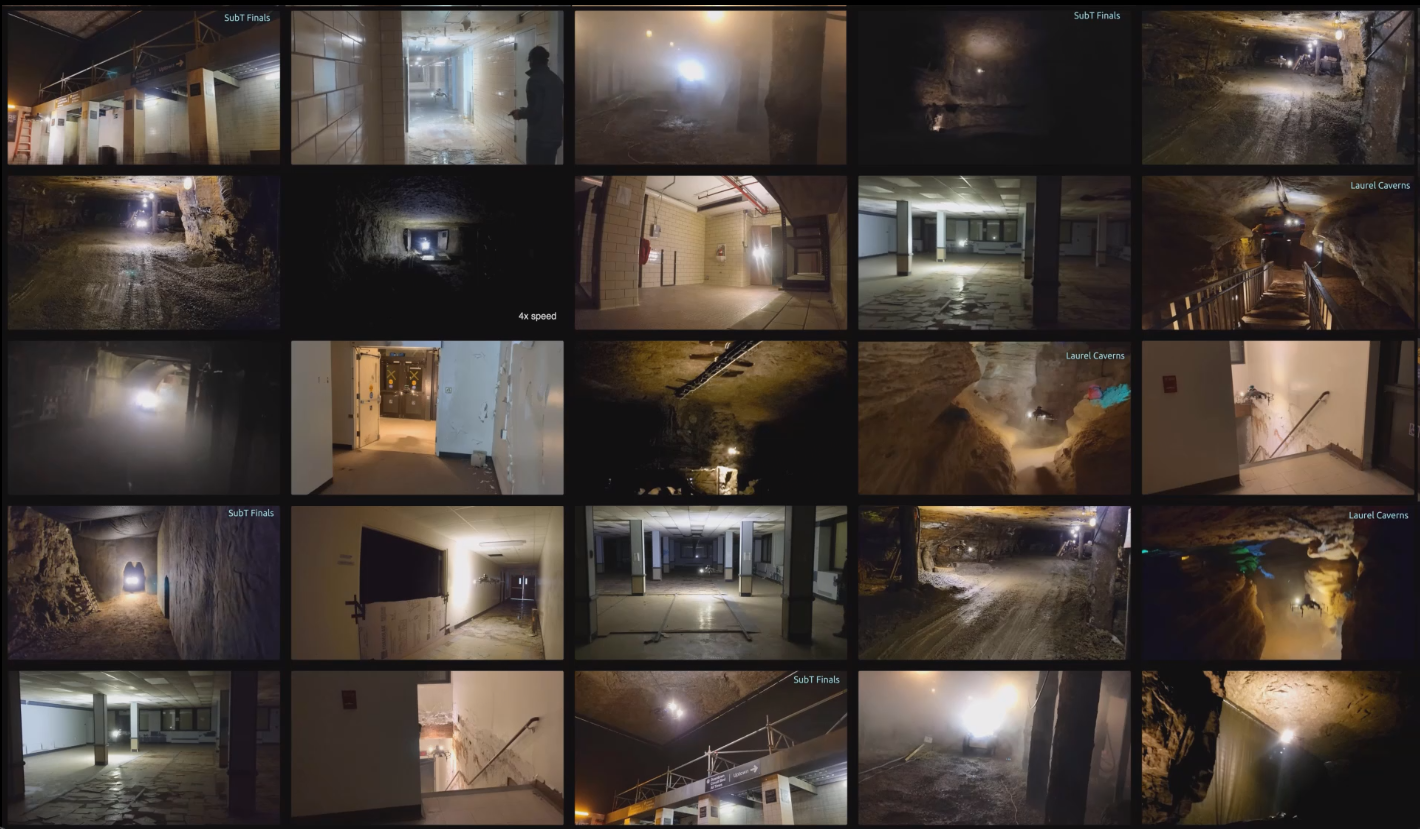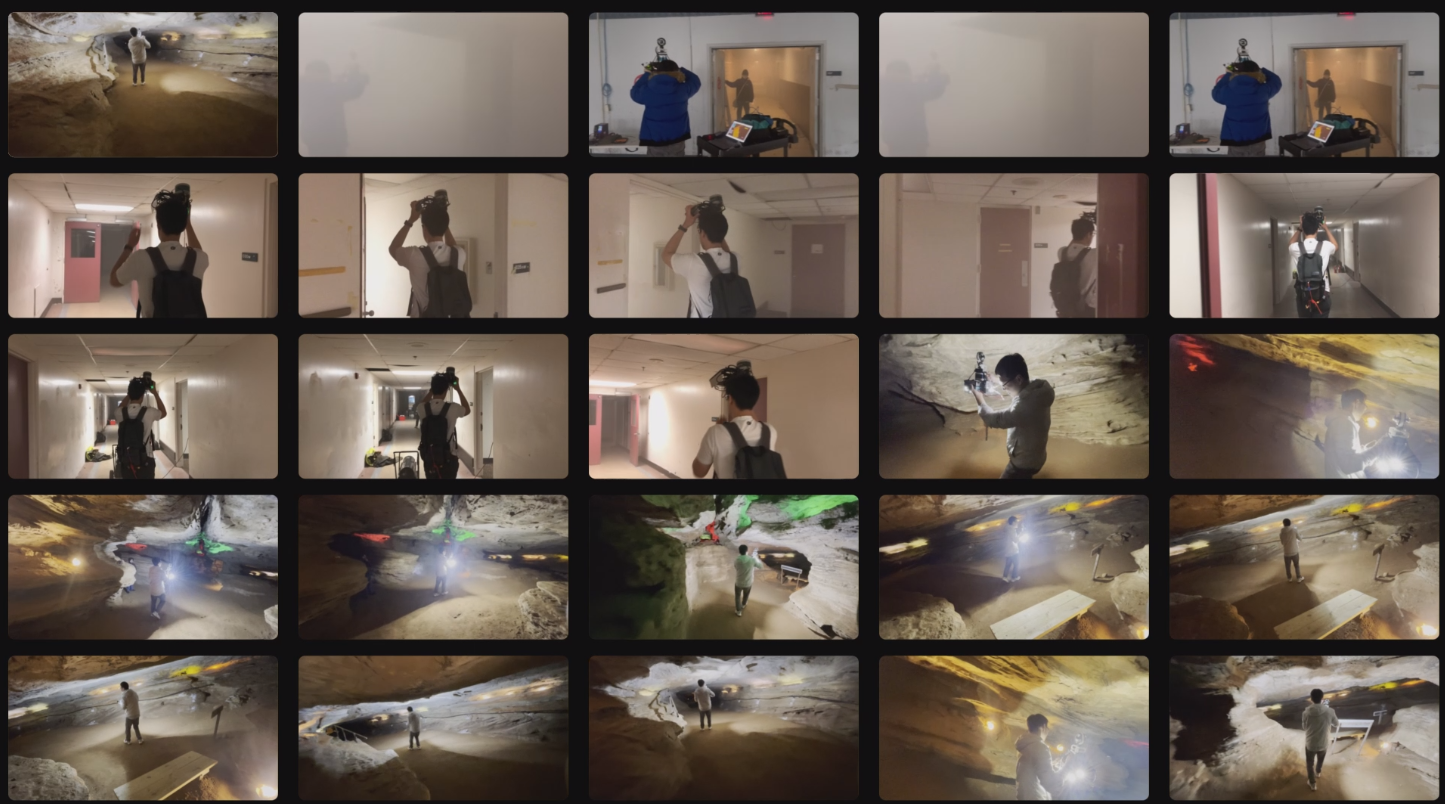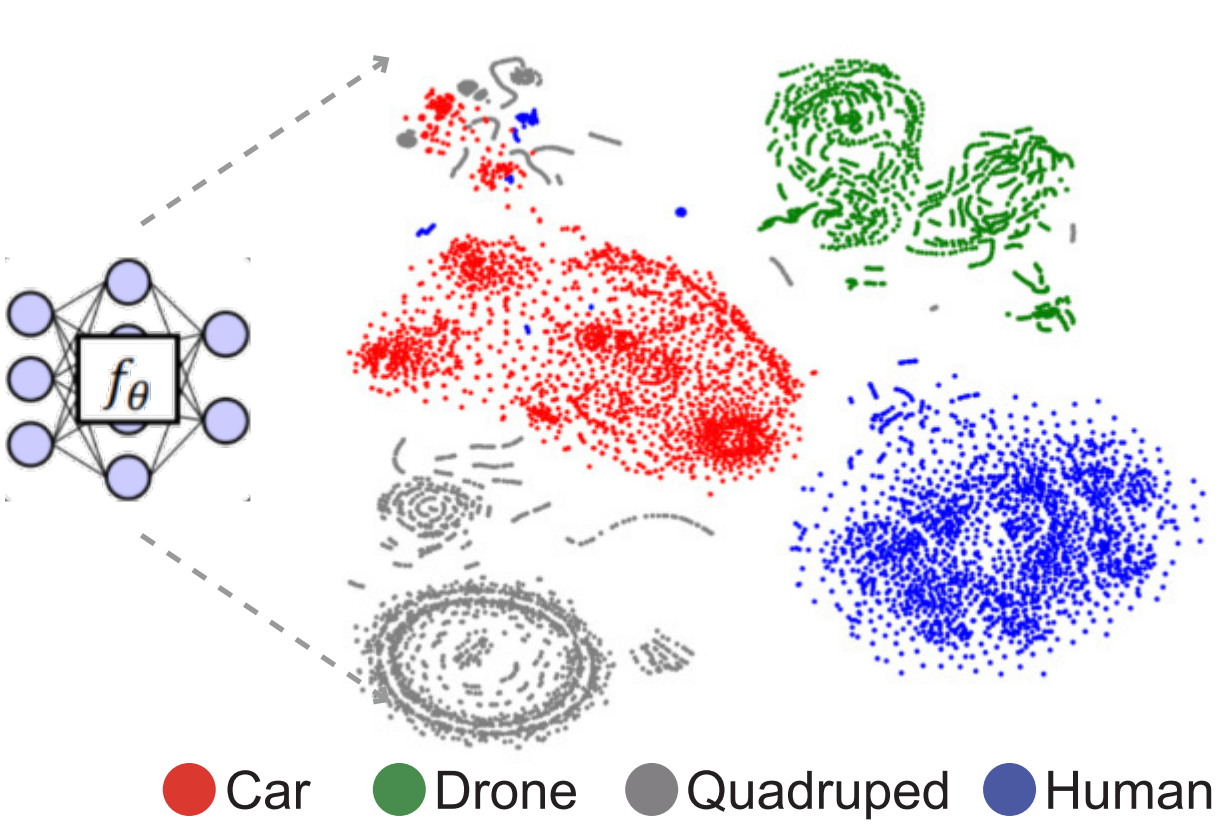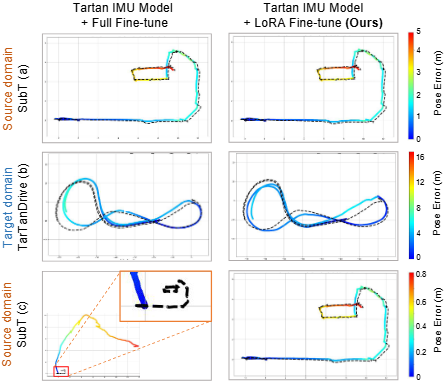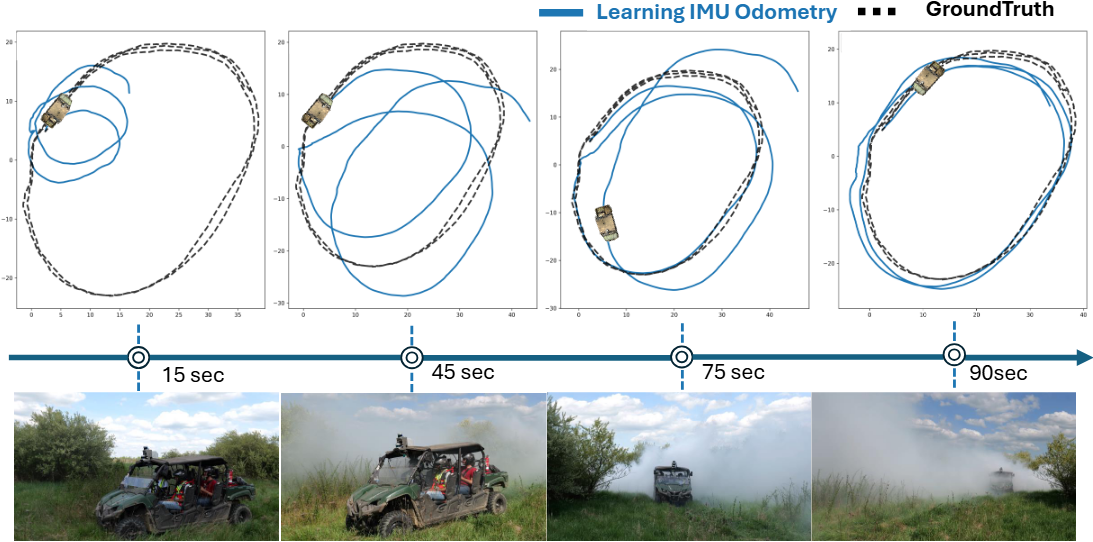Tartan IMU: A Light Foundation Model for Inertial Positioning in Robotics
†Equal contribution 1Carnegie Mellon University *Corresponding Author
 Paper
Paper
 Poster
Code (Coming soon...)
Poster
Code (Coming soon...)
 Dataset & Checkpoints
Dataset & Checkpoints
Results (Foundation Model Performance on Different Robot Platform)
UGV (Foundation Model)
Quadruped (Foundation Model)
Drone (Foundation Model)
Human (Foundation Model)
About TartanIMU
Despite recent advances in deep learning, most existing learning IMU odometry methods are trained on specific datasets, lack generalization, and are prone to overfitting, which limits their real-world application. To address these challenges, we present Tartan IMU, a foundation model designed for generalizable, IMU-based state estimation across diverse robotic platforms.
Our approach consists of three stages: First, a pre-trained foundation model leverages over 100 hours of multi-platform data to establish general motion knowledge, achieving 36% improvement in ATE over specialized models. Second, to adapt to previously unseen tasks, we use Low-Rank Adaptation (LoRA), allowing positive transfer with only 1.1 M trainable parameters. Finally, to support robotics deployment, we introduce online test-time adaptation, which eliminates the boundary between training and testing, allowing the model to continuously "learn as it operates" at 200 FPS in real-time.
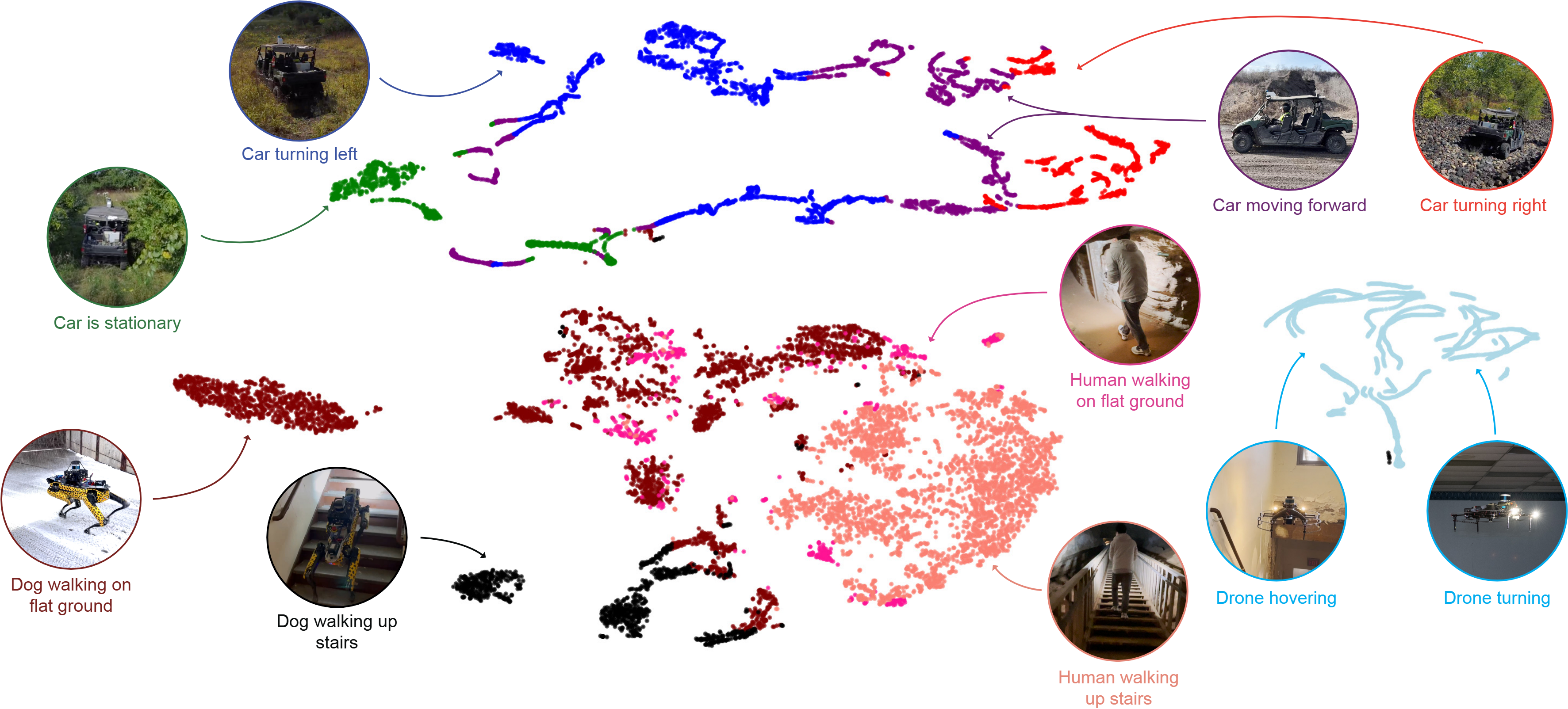
Tartan IMU is to our knowledge the first open-source cross-robot foundation model for pose estimation using solely IMU data.
System Architecture
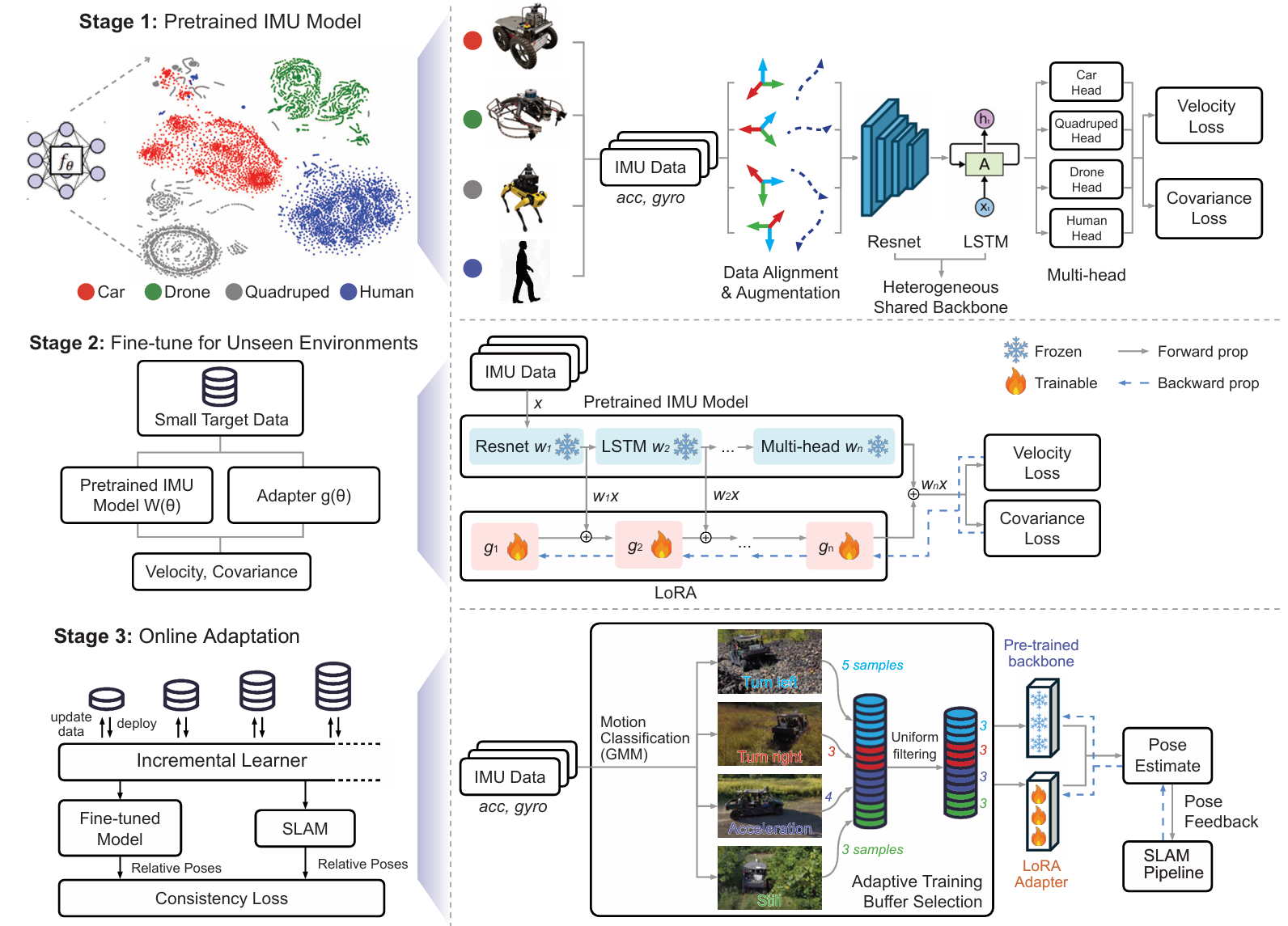
Figure 1: Three learning stages of TartanIMU. (a) Pretrained IMU Model features a shared backbone to capture generalizable IMU knowledge. (b) Efficient Fine-Tuning utilizes an adapter to enable positive transfer for new tasks. (c) Online Adaptation employs an adaptive memory buffer to support on-the-fly model updates during deployment.
Method
Interactive Demo (Coming Soon)
Try TartanIMU with our curated sample trajectories! Select a platform and trajectory below to test with our live model on Hugging Face.
Quadruped Robot Trajectories
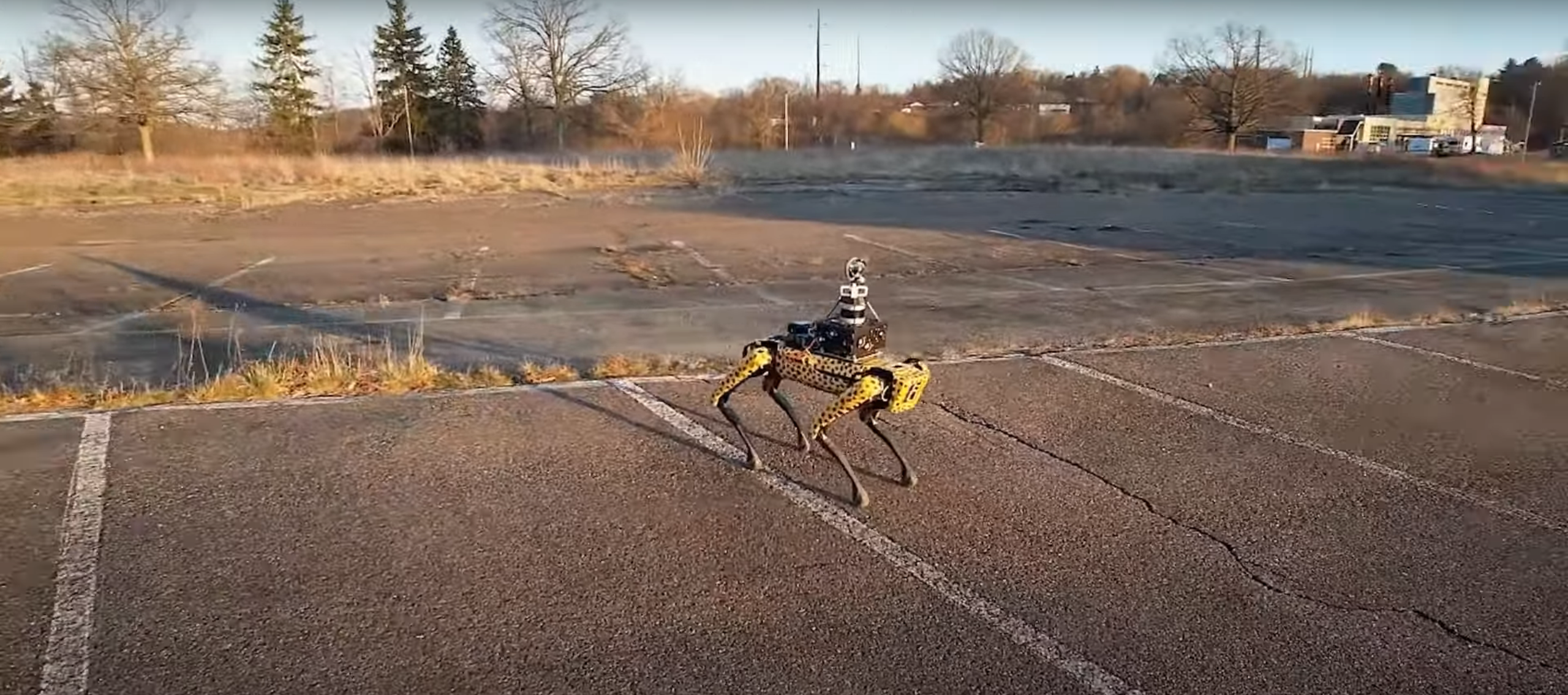
Spot Robot - Outdoor Exploration
Boston Dynamics Spot navigating challenging outdoor terrain with rocks and vegetation.
- Environment: Rocky outdoor terrain
- Challenges: Uneven ground, obstacles
- Data: 200Hz IMU, 120 seconds
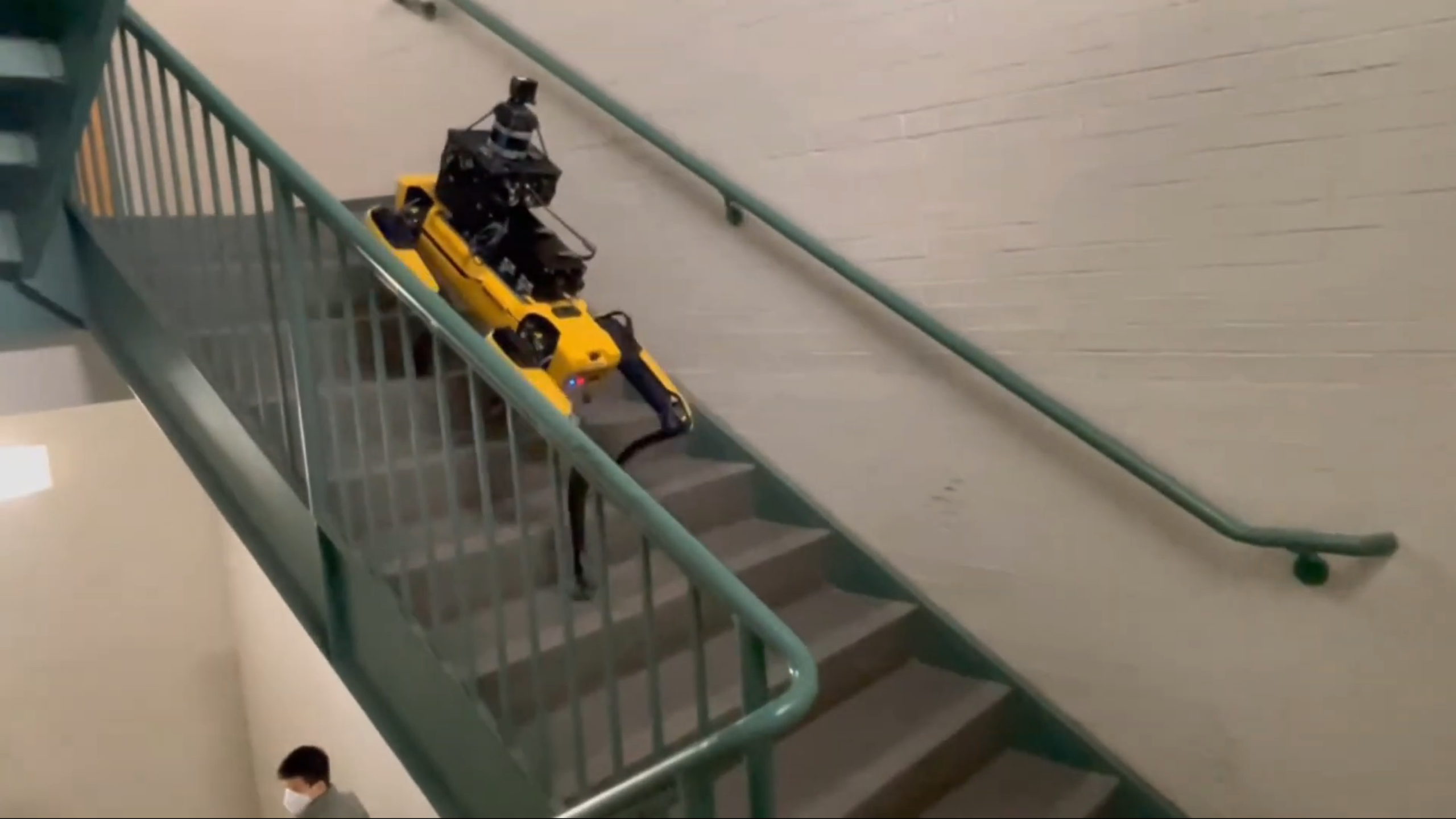
Spot Robot - Stair Navigation
Complex stair climbing and descending with dynamic gait adjustments.
- Environment: Multi-level stairs
- Challenges: Height changes, gait adaptation
- Data: 200Hz IMU, 90 seconds
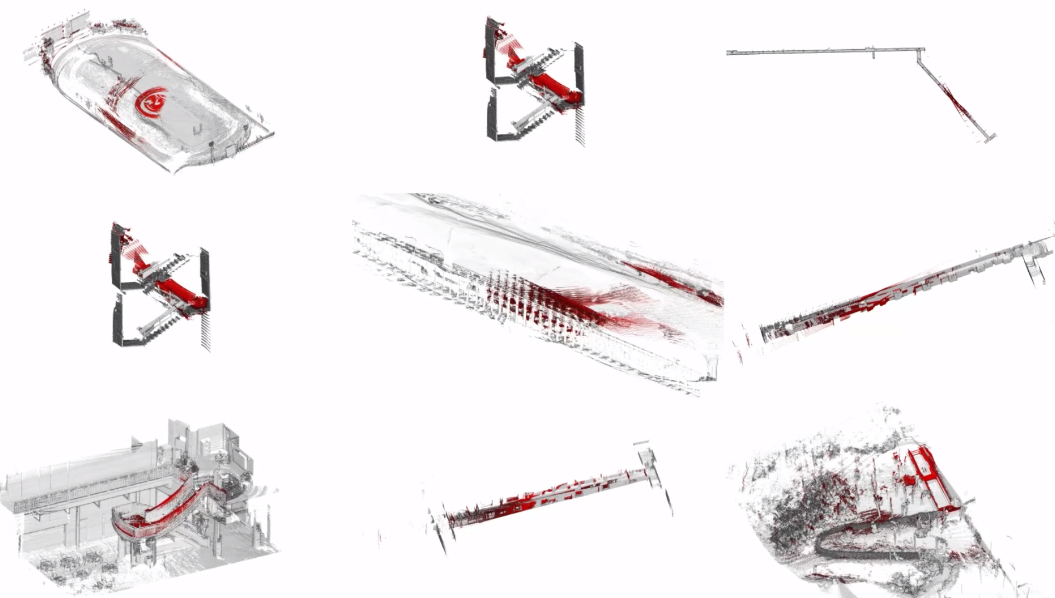
Spot Robot - Indoor Office
Precise navigation through indoor office spaces with furniture obstacles.
- Environment: Indoor office space
- Challenges: Tight spaces, furniture
- Data: 200Hz IMU, 150 seconds
Drone Flight Trajectories

Quadcopter - Indoor 3D Flight
Complex 3D maneuvers including loops, spirals, and rapid direction changes.
- Environment: Indoor flight space
- Challenges: 3D motion, rapid acceleration
- Data: 200Hz IMU, 90 seconds

Drone - Wind Disturbance
Outdoor flight in windy conditions with constant stabilization adjustments.
- Environment: Outdoor with wind
- Challenges: Wind disturbance, stability
- Data: 200Hz IMU, 180 seconds
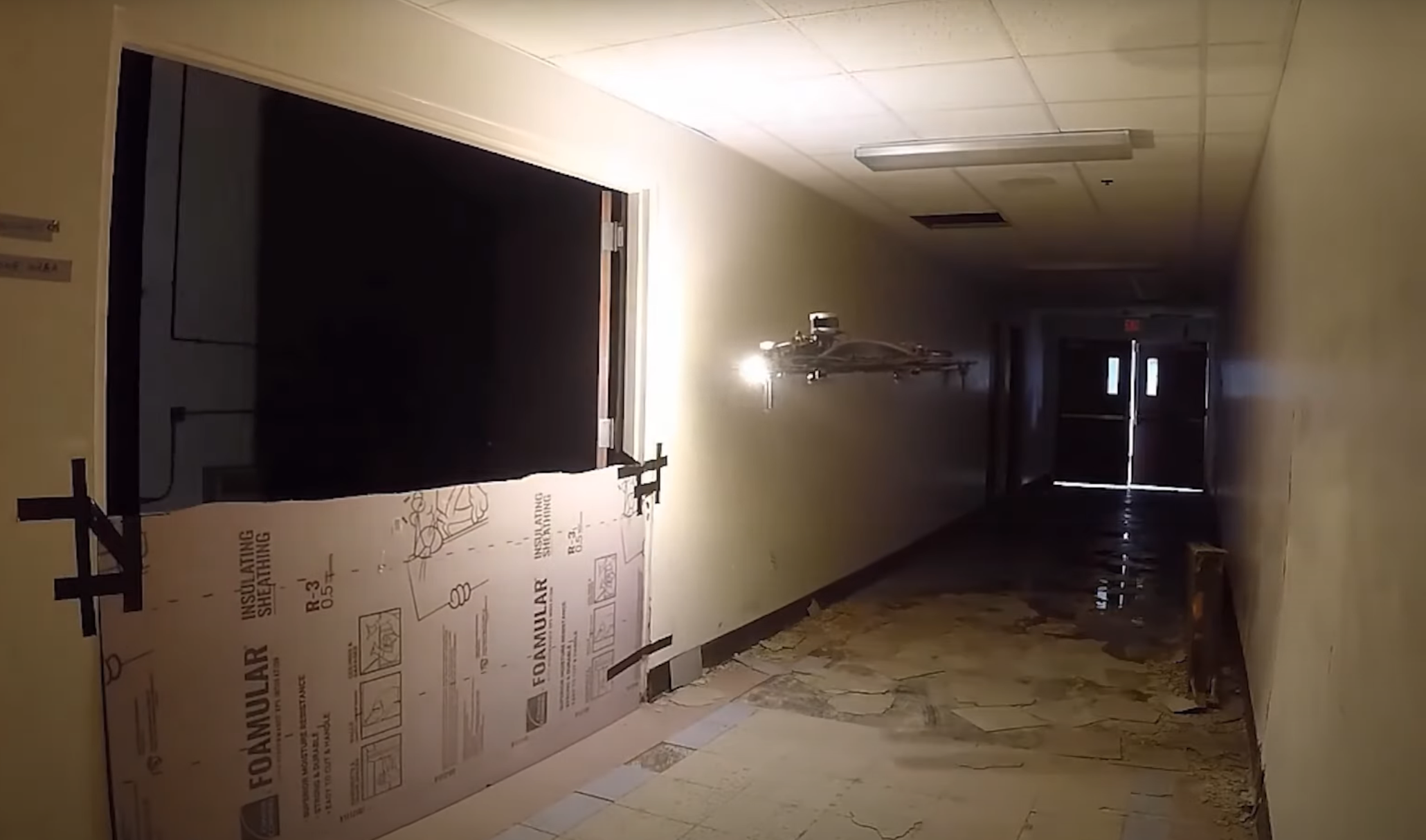
Drone - Precision Hovering
High-precision hovering with micro-adjustments and position holding.
- Environment: Indoor controlled
- Challenges: Micro-movements, stability
- Data: 200Hz IMU, 60 seconds
Human Locomotion Trajectories

Human - Urban Sidewalk
Natural walking patterns on urban sidewalks with turns and speed changes.
- Environment: Urban sidewalk
- Challenges: Variable speed, direction changes
- Data: 200Hz IMU, 180 seconds
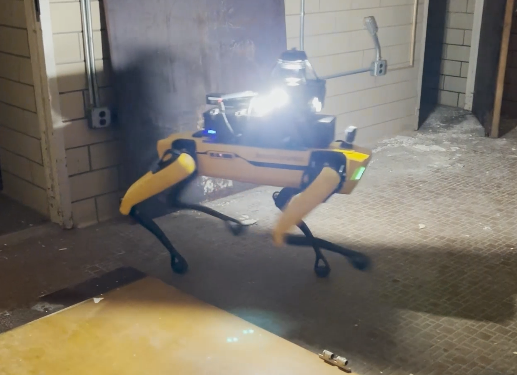
Human - Jogging Path
Continuous jogging with varying pace and directional changes along park paths.
- Environment: Park jogging path
- Challenges: Higher frequency motion, pace changes
- Data: 200Hz IMU, 240 seconds

Human - Building Navigation
Walking through multi-level building with stairs and corridor navigation.
- Environment: Multi-story building
- Challenges: Stairs, elevation changes
- Data: 200Hz IMU, 120 seconds
UGV Navigation Trajectories

UGV - Forest Navigation
Off-road navigation through forest trails with varying terrain and obstacles.
- Environment: Forest trail
- Challenges: Bumpy terrain, speed variation
- Data: 200Hz IMU, 200 seconds

UGV - City Navigation
Autonomous navigation through urban streets with traffic and intersections.
- Environment: Urban streets
- Challenges: Traffic, stop-and-go motion
- Data: 200Hz IMU, 300 seconds

UGV - Parking Precision
Complex parking maneuvers including parallel parking and tight turns.
- Environment: Parking lot
- Challenges: Precision maneuvers, tight spaces
- Data: 200Hz IMU, 90 seconds
Select a trajectory above to get started
Choose any platform and trajectory to see detailed information and try it with our model.
How it works
- Select a platform (Quadruped, Drone, Human, or UGV)
- Choose a specific trajectory from the available options
- Click "Try with TartanIMU Model" to launch our Hugging Face demo
- The selected trajectory data will be automatically loaded
- See real-time pose estimation results and compare with ground truth
Upload your own data
Want to test with your own IMU data? Our Hugging Face demo also supports custom NPZ file uploads.
Required format: NPZ file containing IMU data at 200Hz with keys: 'acc', 'gyro', 'timestamp'
Open Hugging Face DemoDataset (Release Soon)
The TartanIMU dataset contains over 100 hours of diverse IMU data across multiple robotic platforms, environments, and motion patterns. This comprehensive collection enables robust foundation model training and evaluation.
Platform Statistics
| Platform | Robot Types | Environments | Trajectories | Total Duration | Data Rate | Download |
|---|---|---|---|---|---|---|
| Quadruped | Boston Dynamics Spot, ANYmal | Indoor, Outdoor, Stairs, Rough Terrain | 45 | 28.5 hours | 200 Hz | Hugging Face |
| Drone | DJI M100, Custom Quadcopter | Indoor Flight, Outdoor, Windy Conditions | 38 | 22.7 hours | 200 Hz | Hugging Face |
| Human | Handheld Device, Body-worn IMU | Urban Walking, Jogging, Indoor Navigation | 52 | 31.2 hours | 200 Hz | Hugging Face |
| UGV | RC Car, Autonomous Vehicle, SubT Robot | Off-road, Urban Streets, Forest Trails | 42 | 25.4 hours | 200 Hz | Hugging Face |
| Total | 12 Robot Types | 15+ Environments | 177 | 107.8 hours | 200 Hz | Complete Dataset |
Data Format and Usage
File Format
NPZ files containing synchronized IMU data:
acc: 3D accelerometer data (m/s²)gyro: 3D gyroscope data (rad/s)timestamp: High-precision timestampspose_gt: Ground truth poses (when available)
Pre-processing
All data is:
- Temporally synchronized across platforms
- Calibrated and bias-corrected
- Resampled to consistent 200Hz
- Segmented into motion-coherent sequences
Quick Start
Load and use the data:
import numpy as np
data = np.load('trajectory.npz')
acc = data['acc'] # Shape: (N, 3)
gyro = data['gyro'] # Shape: (N, 3)
timestamps = data['timestamp']Key Features
Multi-Environment
Indoor offices, outdoor terrains, underground caves, urban streets, forest trails
Cross-Platform
Legged robots, drones, ground vehicles, handheld devices
Synchronized
Hardware-synchronized IMU data at 200Hz across all platforms
Diverse Motion
Walking, flying, driving, climbing, hovering, maneuvering
Limitations
While TartanIMU exhibits strong generalization across ve- hicles, drones, and legged robots, it still cannot support ar- bitrary robotic platforms. However, our experiments show that the car motion head generalizes well to TartanDrive and SubT vehicles. We believe our categories—car, humanoid, quadruped, and drone—encompass most robots. For unseen platforms, introducing a new motion head or leveraging a mixture of existing experts (MoE) presents a promising future direction.
Future Research Directions
We are actively working to address these limitations through:
- Multi-modal fusion: Integrating visual and LiDAR data for drift correction and scale recovery
- Adaptive learning: Developing methods for continuous learning from deployment data
- Hardware optimization: Creating efficient model variants for edge computing platforms
- Robust estimation: Improving resilience to sensor failures and environmental disturbances
- Extended datasets: Collecting data from more diverse platforms and challenging scenarios
